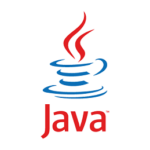This is the first part of a 3-part series “Designing and building a search system for log data”. Part 2 is here, and part 3 is here.
 For the past few years, I’ve been building indexing and search systems, for various types of data, and often at scale. It’s fascinating work — only at scale does O(n) really come alive. Developing embedded systems teaches you how computers really work, but working on search systems and databases teaches you that algorithms really do matter.
For the past few years, I’ve been building indexing and search systems, for various types of data, and often at scale. It’s fascinating work — only at scale does O(n) really come alive. Developing embedded systems teaches you how computers really work, but working on search systems and databases teaches you that algorithms really do matter.
Continue reading Designing a search system for log data — part 1




 I recently wrote my first post for the
I recently wrote my first post for the